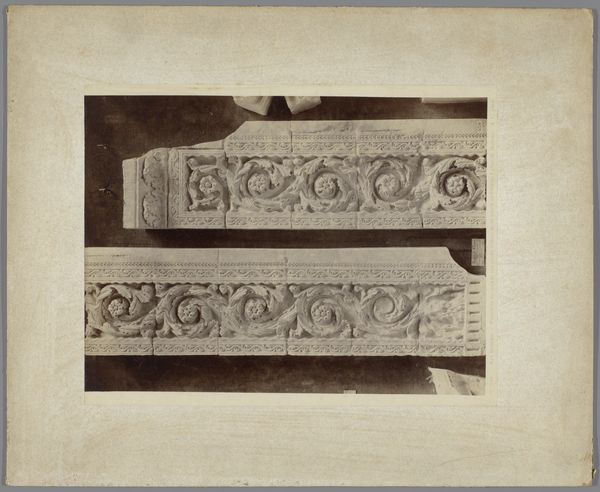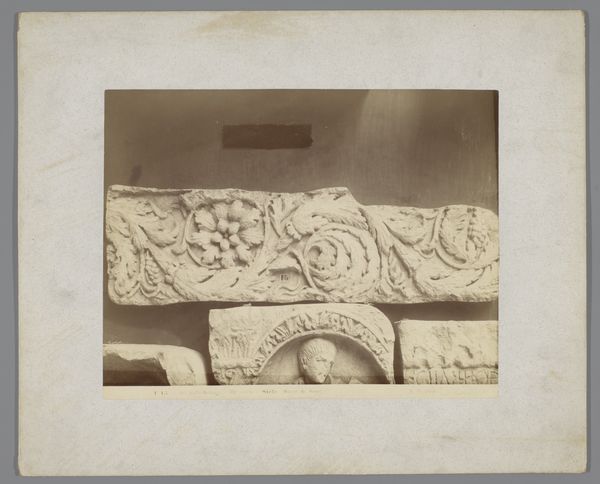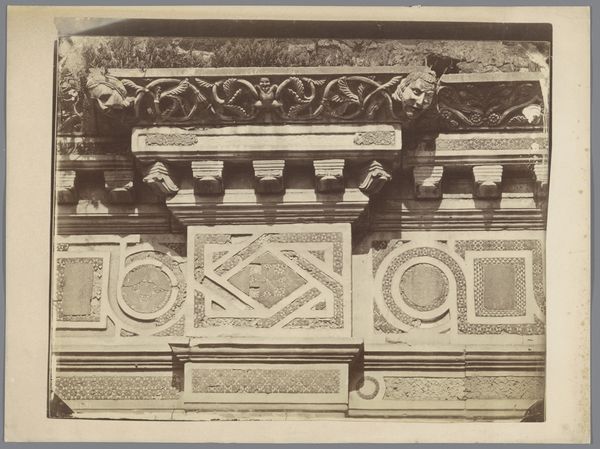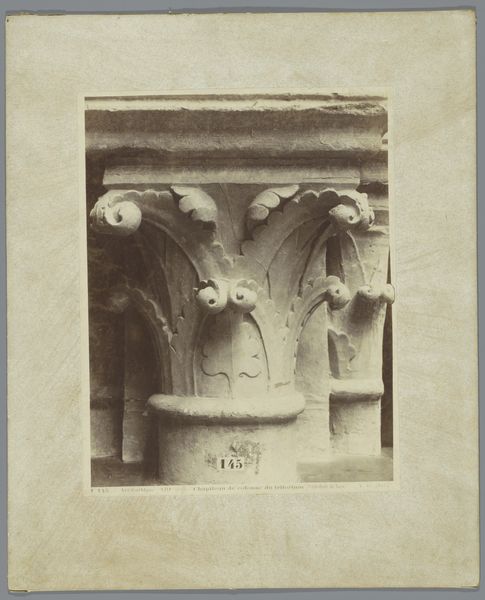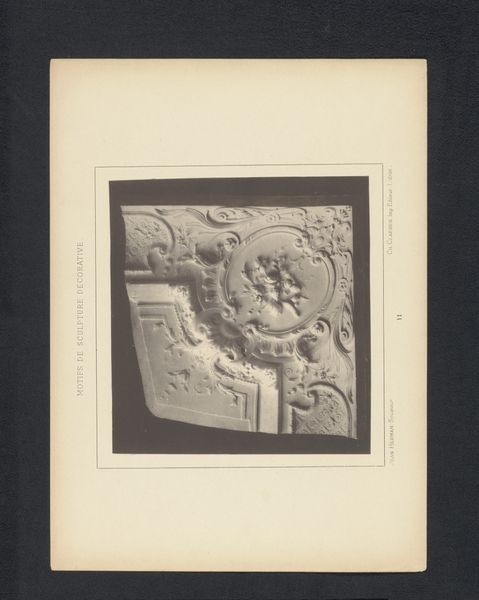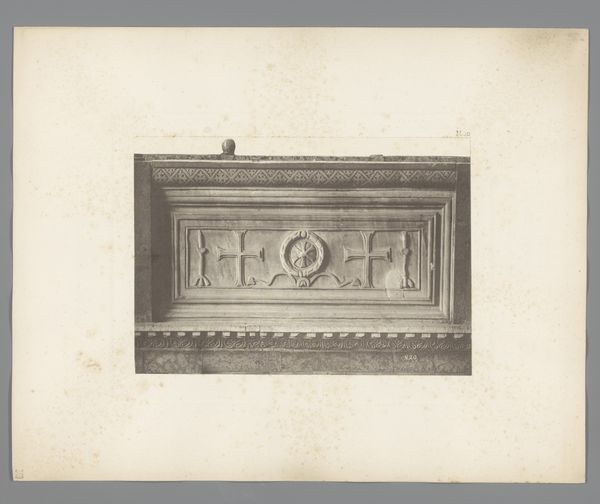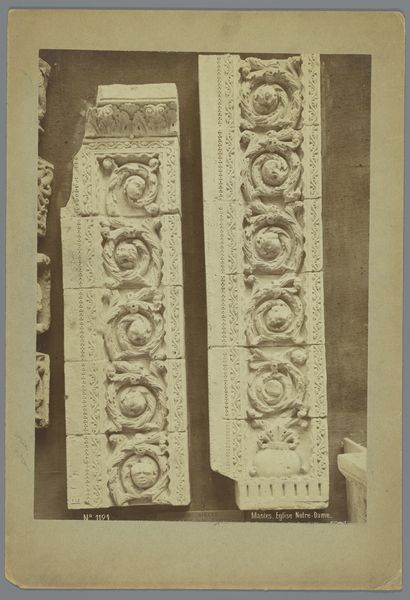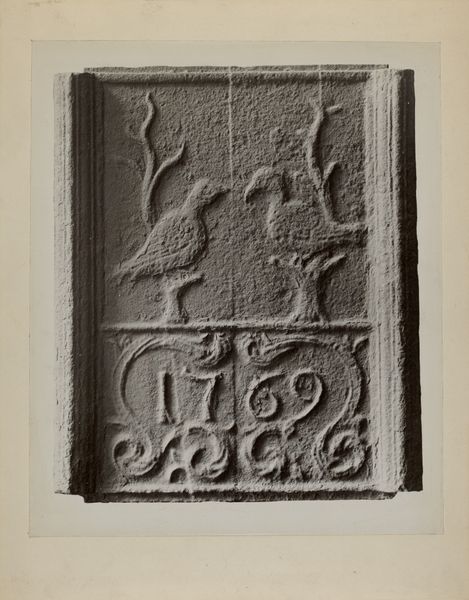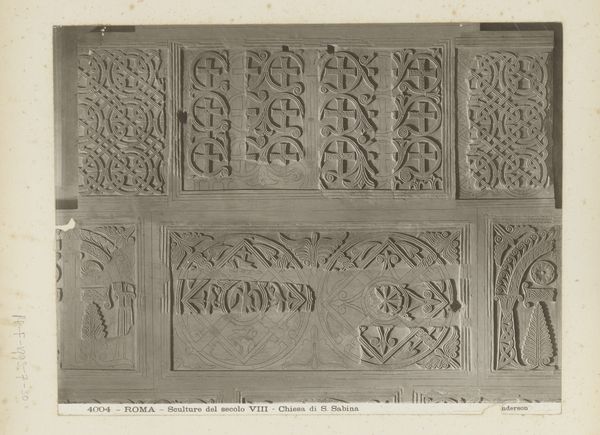
Deel van de timpaan van de Saint-Pierre kerk in Moissac 1850 - 1900
0:00
0:00
carving, print, relief, photography, gelatin-silver-print
#
carving
# print
#
relief
#
landscape
#
form
#
photography
#
romanesque
#
geometric
#
gelatin-silver-print
#
line
Dimensions: height 309 mm, width 371 mm
Copyright: Rijks Museum: Open Domain
Editor: This is a photograph, a gelatin-silver print, taken between 1850 and 1900 by Adolphe Giraudon. It's a view of a section of the tympanum from the Saint-Pierre church in Moissac. The geometric carving gives it a formal and imposing quality, like something deeply embedded in history. What does this piece tell you about the time it represents? Curator: This photograph allows us to engage with the Romanesque period through the lens of 19th-century documentation. The act of photographing such architectural details reflects the rising interest in preserving and understanding medieval art in the 19th century. Consider the role of photography itself – it democratizes access. Previously, only scholars or those who could travel could study these carvings. How might the availability of these images have influenced the understanding and appreciation of Romanesque art among broader audiences? Editor: That's interesting. So, this image isn't just about the church carving, but also about how people *thought* about the past? Curator: Precisely! It's about the cultural value placed on these artifacts, and the methods used to disseminate knowledge. Think about the motivations behind photographing it. Was it purely for documentation, or were there aesthetic or even political considerations influencing the photographer's choices? How does this image contribute to the grand narratives of art history constructed during this period? Editor: It sounds like the photograph’s existence highlights a turning point, bridging the medieval artwork to modern access and interpretation. Curator: Exactly! By examining the photograph, we begin to understand how art and history are perceived and communicated across generations and consider photography's impact on our cultural heritage.
Comments
No comments
Be the first to comment and join the conversation on the ultimate creative platform.
